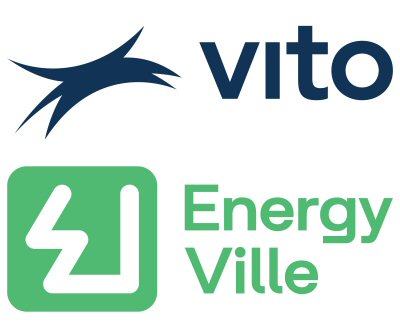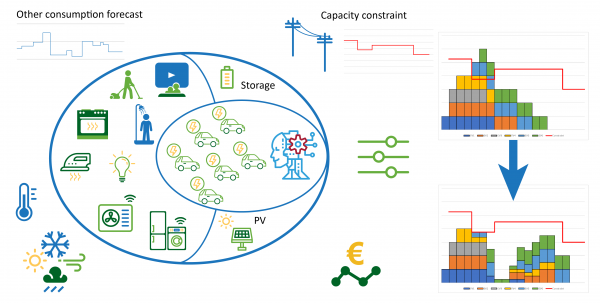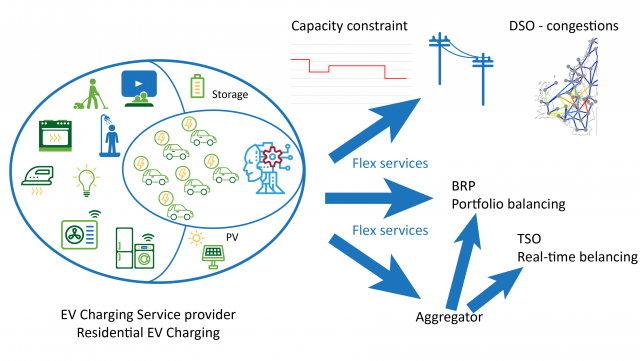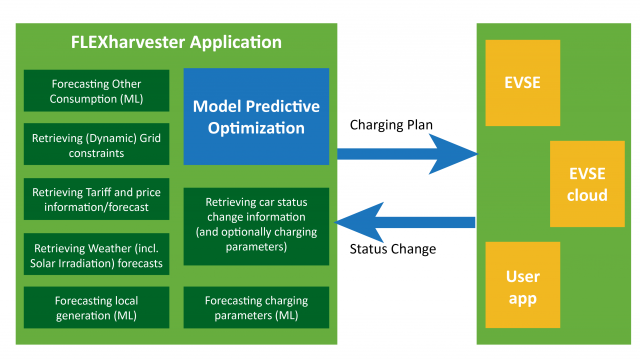STORM District Energy Controller
A VITO/EnergyVille developed artificial intelligence making use of the thermal mass of buildings for flexibility management and demand response in heating networks. The outdoor temperature sensor steers in a smart way the interaction between production, the network and the building, resulting in:
- Production mix cost reduction (peak vs base, CHP, heat pump)
- Extension of connected customers potential without investment in production and backbone infrastructure for networks that are at the limit of their capability
- CO2 emission reduction
Smart Electric Vehicle Charging
The Smart EV Charging application determines an optimal EV charging plan. It ensures that charging is done in a secure manner, within the available capacity. This way, one can make more effective use of the available infrastructure while offering a better service to the car owners.
It not only supports a fixed connection capacity constraint but as well dynamic time-varying grid capacity constraints, that may be communicated by a DSO in a Day-Ahead or Intra-Day manner.
On top of this, it can take into account other consumption forecasts when determining the dynamic capacity that is available for EV charging.
Of course, it leverages the availability of local generation and storage.
Next to guaranteeing that the capacity constraints are respected, the application can minimize the EV charging cost (for the EV Charging service provider or building owner) for future tariff structures, featuring injection fees, dynamic tariffs and capacity tariffs, and a combination of these. Flex services provided to others (as indicated in the next slide) can offer additional monetization of Smart EV charging.
Flexibility Services provided by Smart EV Charging
EV Charging prime purpose is to benefit the EV Charging Service provider or Residential EV Charging.
But the scope can be widened to offer Flex Services to multiple stakeholders.
DSOs can benefit from the available flexibility by communicating dynamic grid constraints in a D-1 or ID manner.
BRPs and TSOs can benefit from the available flexibility for balancing.
Aggregators may harvest the available flexibility and create a business by acting aggregating and combining the flexibility to facilitate the valorisation of it.
Concept
This scheme shows the different building blocks for the Flex harvester smart charging application. It combines information from external services like weather forecasting, energy data collected by a building energy management system and charging constraints collected via a charging Platform operator or a user app.




